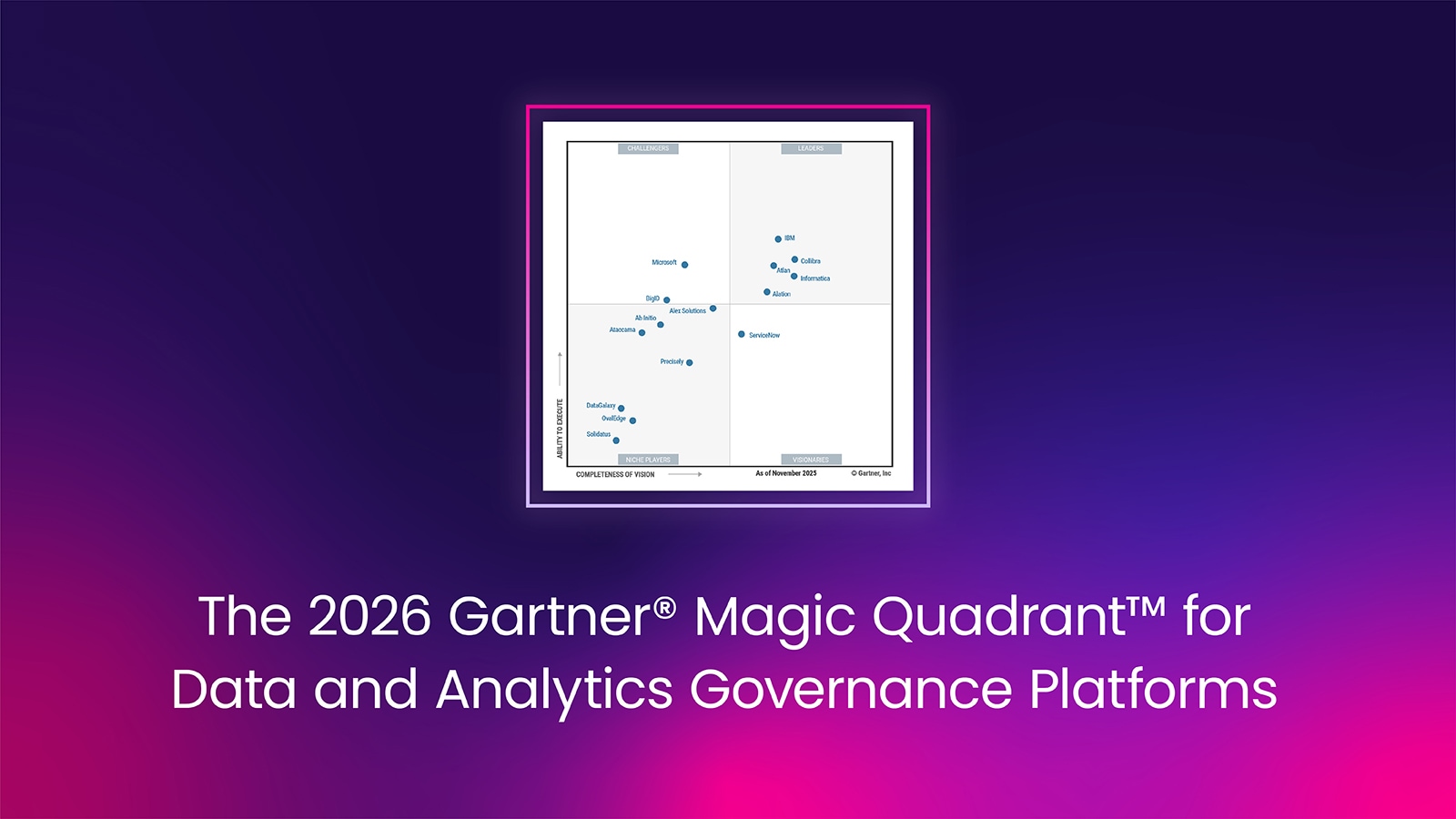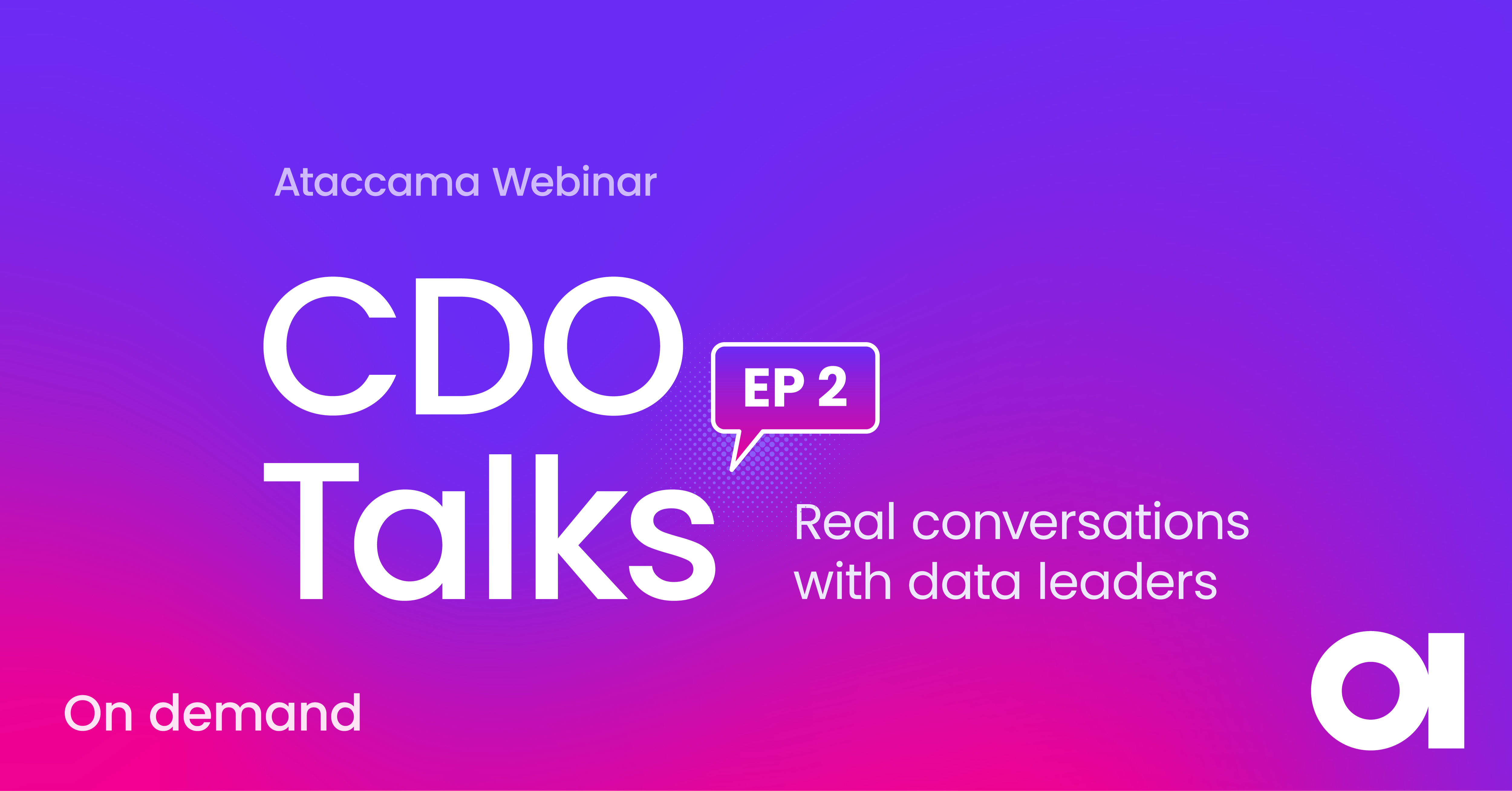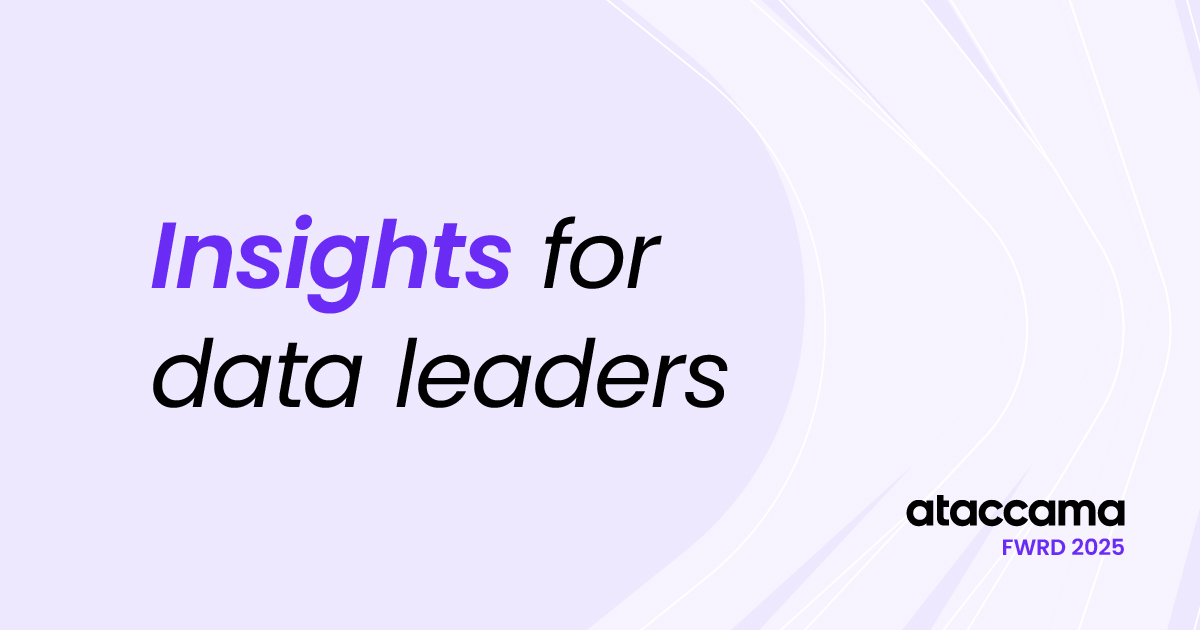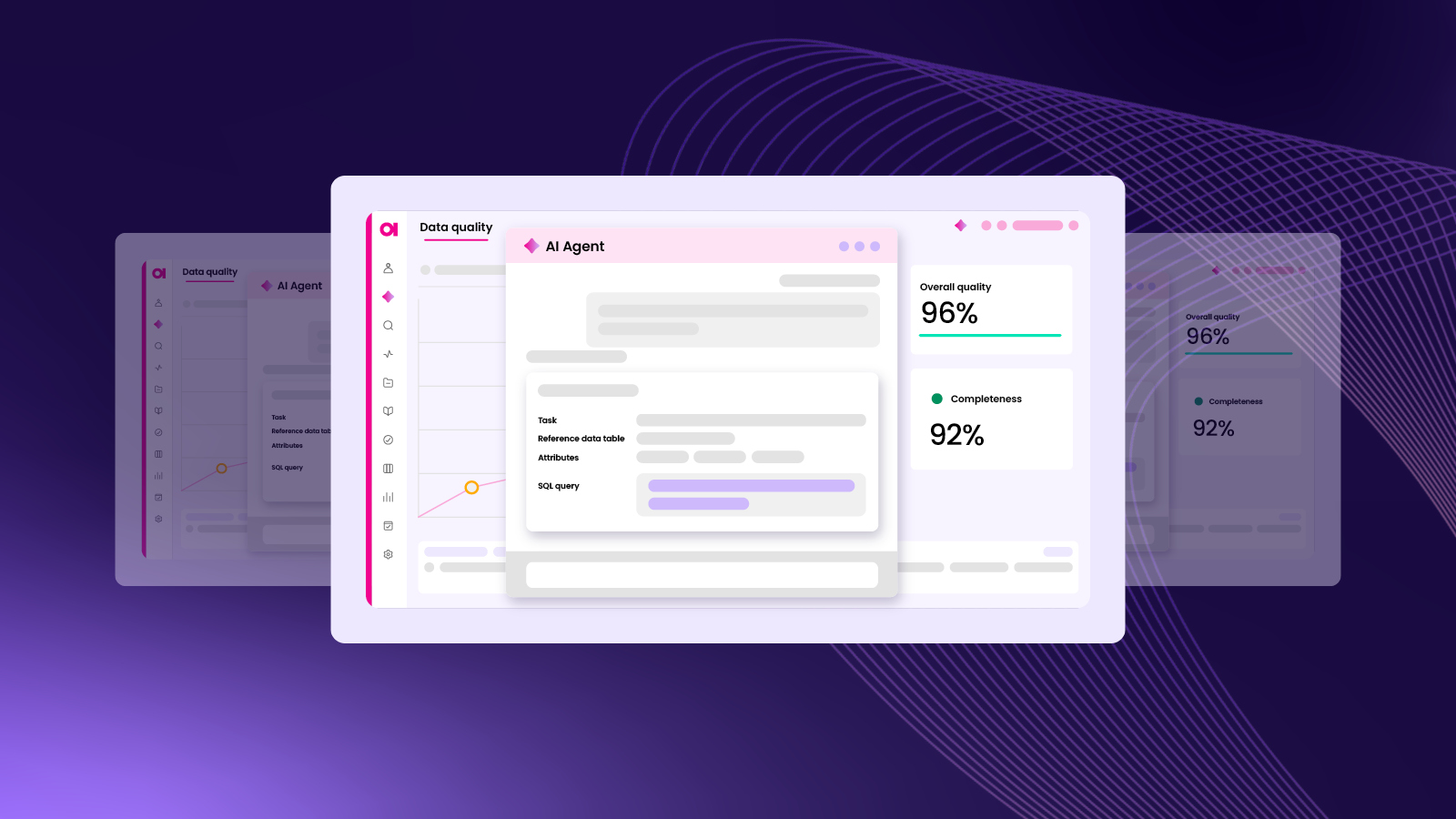The 4 Stressful Challenges Most CDOs Face and How to Overcome Them

Imagine a grand concert hall bathed in the warm glow of anticipation, every seat filled with eager patrons, waiting for the symphony orchestra to make this a night to remember.
When the curtain lifts, they see something unexpected: instead of 100 musicians on stage, there are just a couple dozen. Nonetheless, the conductor is poised to deliver. He steps forward, lifts the baton with a flourish, and the music begins.
As the orchestra plays, strange things start happening: musicians hesitating, searching for the right notes, interpreting the melodies differently, some struggling to read the music at all. At some point, other people come on stage and change the notes and tempo on the musician’s sheets.
Why are we telling you this odd story?
Because that’s what some Chief Data Officers—the brilliant data conductors of the enterprise—experience when orchestrating their digital symphonies.
In this article, we summarize the 4 key challenges of CDOs in 2023 and offer solutions to make your life easier.
Key takeaways
We know that as a CDO, you are extremely busy, so here is a super-condensed version of this blog post in 5 bullets:
- The main challenges that Chief Data Officers (CDOs) face are:
- A lack of control over data and ownership of data management
- Insufficient resources for numerous projects
- Misunderstanding of the CDO’s role by others in the organization
- A lack of a data-driven culture.
- Data governance is crucial for CDOs to gain control over data, but fragmented responsibility for data management slows them down. CDOs should focus on a limited number of business problems, deliver small wins, and consider decentralized methods like the Data Mesh.
- The role of the CDO is often unclear, leading to burnout and short tenures. To succeed, CDOs need clarity over the short- and long-term priorities, ownership of data management, and collaboration with the CIO.
- CDOs lack the resources to execute a long list of initiatives. Investing in automated technology and unified data management platforms can help scale their data programs.
- Changing organizational behaviors towards data-driven decision-making is the main obstacle to success with data initiatives. CDOs need to communicate the benefits of data governance and showcase its value to gain support from stakeholders.
#1 Lack of control over data and ownership of data management
- Only 40-54% of CDOs report having primary responsibility for data management. The rest share responsibility with other senior executives and business heads (from MIT CDOIQ study & Data and Analytics Leadership Annual Executive Survey 2023)
- Data Governance is the top priority for 44% of CDOs.
One of the top priorities for any CDO, especially an organization’s first CDO, is to get data under control with data governance.
This mission to make data understood, trusted, protected, and available is often hindered by fragmented responsibility over data management. One problem exacerbates the other.
Imagine an organization where the CDO manages part of the data, the CIO manages another part, and several business units manage their own data as well. If all of these stakeholders don’t follow the same set of data governance rules, they face several risks:
- PII is managed with different standards, and you cannot ensure its protection across the organization.
- Different departments waste time selecting disparate data tools and platforms.
- Data sharing and building data products are inefficient.
- Department A buys external data sets that have been purchased already by Department B.
Without global responsibility over the data lifecycle, availability, and quality, the role is futile. CDOs will have a limited impact with their numerous initiatives, which makes hiring one useless from a business perspective.
If the role of the CDO has been created, it should be given powers to mitigate the issues associated with poor data management.
How can CDOs get data under control and assume primary responsibility for data management?
Data governance and data strategy are top CDO priorities for a reason.
You can’t create a data-enabled organization if your house is not in order. Build the foundations first, and then work on advanced capabilities.
However, that doesn’t mean data scientists stop working on their projects until the whole data landscape is documented, data lineage is established, and everyone speaks the same language. These are all results of effective data governance, but they are achieved in a gradual, ongoing process. At the beginning of their tenure, CDOs can focus their efforts on a specific business unit, department, data domain, or problem, and expand. It’s a tried and true method of showing value fast and gaining trust.
Some examples of delivering value for CDOs are:
- Increased margins through pricing optimization.
- Better customer NPS scores thanks to tailored products and customer experiences.
- Decreasing the risk of data breaches by eliminating PII in systems where it should not be.
- Decreasing costs by optimizing the supply chain.
Decentralized (but governed) methods are effective too, and that is why Data Mesh has been gaining popularity in recent years. It lets a CDO enforce global standards for building data products without micromanaging each business unit or division.
By gradually showing value, CDOs advance their careers and gain bigger mandates with global responsibility over data and data strategy.
Dive deep into the activities CDOs choose to bring value to their organizations.
#2 The CDO role is still not fully understood
- 62% feel the role is not as well understood as other C-level roles in their companies
- Only 35.5% report the role of the CDO as successful and established
On average, CDOs stay in their roles for just 2.5 years.
Looking at the stats above, it’s not hard to connect the dots. One of the main reasons is unclear expectations and priorities. Indeed, looking at the MIT CDOIQ study, CDOs deal with a wide range of activities:
- Enabling data-driven culture
- Data governance
- Enabling new business initiatives and insights based on data/analytics/Al
- Risk and regulatory compliance
- Data monetization
- Data ethics initiatives
- Prevention of data breaches
- Fraud prevention
That’s just the initiatives with more or less obvious business value. Look at CDO job descriptions, and you will see that they are also expected to manage people, oversee the data architecture and infrastructure, evaluate technology vendors, and stay current with industry trends and technological advancements.
Clearly, CDOs need to discuss priorities with the CEO or CIO to avoid burnout and feel successful in their jobs.
Another problem is that when the role of the CDO is introduced for the first time, it often means taking part of the agenda away from the CIO.
It’s a pity that this might cause animosity because the two roles have a common interest: transforming processes and enabling business efficiency with technology and data, each specializing in different aspects of this common endeavor. Moreover, if the role of the CDO is clearly positioned and defined, the CIO should be relieved to pass a significant portion of their historical responsibilities to a new executive.
Of course, this goes back to the issue we discussed in the previous section, and the fact that the CDO role is still not well understood might be a consequence of that. CDOs would be and feel more successful if:
- They could work within a clearly defined range of responsibilities
- They had undisputed ownership of all things data
How can organizations position CDOs for success and establish clarity around the role?
There is no reason why CIO and CDO cannot successfully collaborate.
The key to success lies in proper communication and setting expectations. To increase the chance of success, before starting a job, a CDO has to:
- Agree on the CDO mandate and the new reporting structure (do they report to the CEO or the CIO?)
- Clearly define the short-, medium-, and long-term goals
- Have a team of specialists supporting them
- Meet the CIO, make sure they are onboard, and have a plan for cooperation
- Obtain primary responsibility for data management and strategy
#3 Insufficient resources in the face of too many projects
- 53 percent of CDOs face the challenge of insufficient resources to accomplish their goals.
As we’ve shown above, CDOs are under pressure to show results across multiple initiatives, and it’s challenging to do so without having adequate resources.
Data management teams are usually relatively small. For example, data governance initiatives are often run by 2-3 people, with extended teams that include business analysts, and data engineers reaching 12-15 people. And that is the reality in organizations employing thousands of people and running multiple lines of business. Sometimes, there are no dedicated people but just extended job descriptions – as is often the case with data stewards. These teams get spread thin and drown in endless backlogs which they often struggle to clear.
Should CDOs hire more people or look at other ways to deal with resource shortages?
How can CDOs move data initiatives forward with limited resources?
Hiring more people is not always the right answer to achieve more because people do not scale.
As a CDO, you can invest in technology that automates data management activities, such as data discovery, metadata management, policy enforcement, issue prevention, and data quality monitoring. This would free up the time of data stewards, engineers, and others to expand the scope of the data governance program or focus on new data-powered business initiatives.
But automation is just part of the equation. Choosing platforms over stitching single-purpose solutions means faster results. There are several reasons for that:
- Procuring a solution from a new vendor is much slower than working with a vendor vetted by your company.
- Bringing a new solution to a company is always hard and is often met with resistance.
- According to Gartner, you pay for double functionality without realizing it
- Integrating solutions such as a data catalog, data quality monitoring, and MDM (and you will want to integrate them) prolongs your time to value. Finally, integrations break and cause business outage.
Having said that, it’s best to check openness and composability (APIs, OOTB integrations) to avoid technology limits and vendor lock-ins.
Unified data management platforms like Ataccama ONE help CDOs achieve more with their tools. For example,
- Master data, create customer golden records, and make them available in a data catalog
- Move from profiling data to creating and applying data quality rules in one interface in a single UX workflow
- Manage reference data as a separate use case but then use them in data quality rules
- Find data in the catalog, get access via role-based access controls.
#4 Lack of a data-driven culture and struggle to change behaviors
- 62% report difficulty in changing organizational behaviors and attitudes as their main challenge. According to NewVantage Partners, 80% cite cultural issues as the biggest obstacles to realizing business value.
- 56% report the absence of data-driven culture or data-driven decision-making.
It’s hard to implement data governance or analytics projects without people being on board with them, from the C-suite to middle management.
You have to get people to collaborate on business term definitions, comply with policies (and not circumvent them), and change their workflows when confronting any business problem. They would need to rely on data as a starting point and not just rely on hunches and opinions. For many, this will be hard.
It will also be hard for the CDO to make any difference with these issues.
How can CDOs get people on board with data projects that break the status quo?
That is why communication is so important for the CDOs.
Start with “what’s in it for them.” Data governance is a long project with small steps, but showing the vision of the future is what gets people on board.
Once they see what they can do with accessible and trustworthy data, that everyone understands in the same way, and once the C-suite and management see the cost-cutting and revenue-generating power of implementing data governance best practices, they will be willing to start taking it one step at a time.
Communicating the plans, milestones, and minor or major successes could be what makes or breaks a CDO, especially the first one in the organization.
How can you show value as a CDO?
CDOs are measured on the business value they create.
What initiatives should you focus on? Find out in Part 2 of the CDO Universe series.







